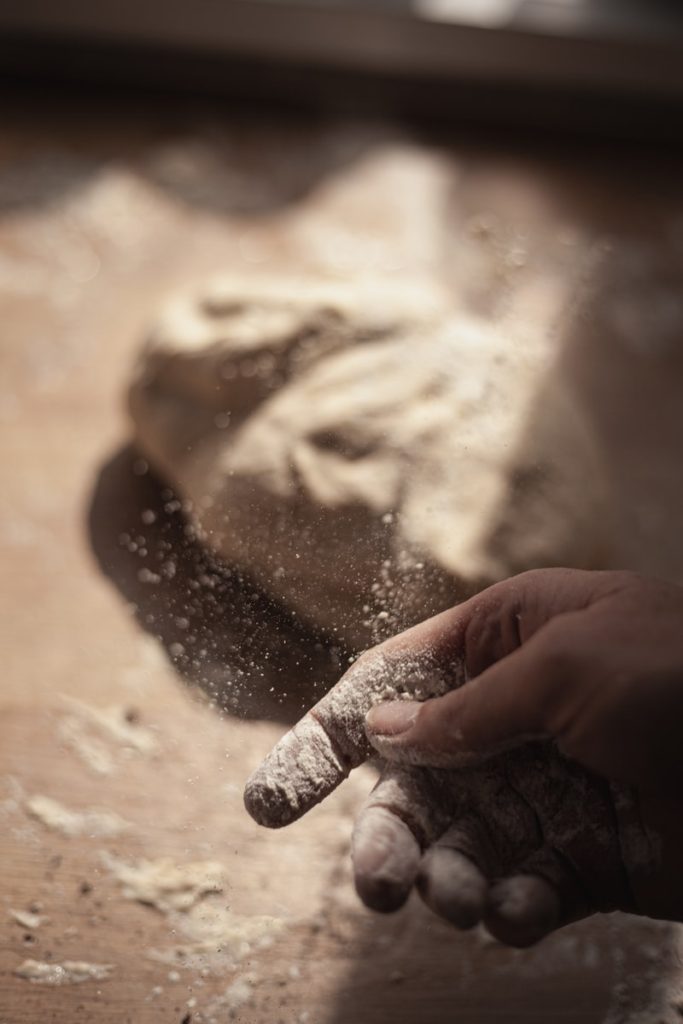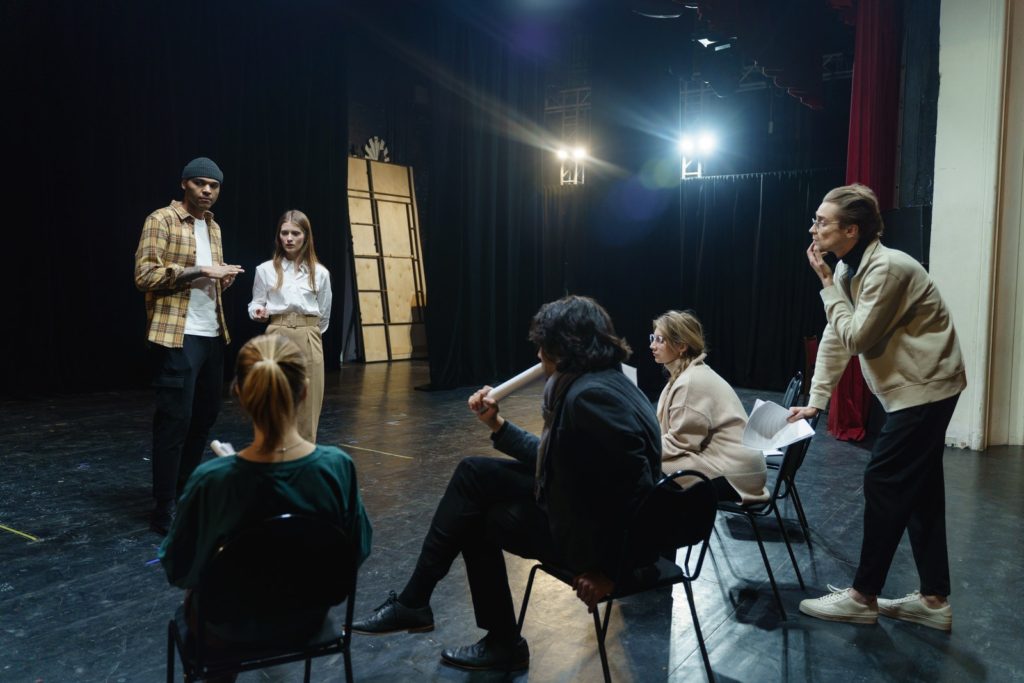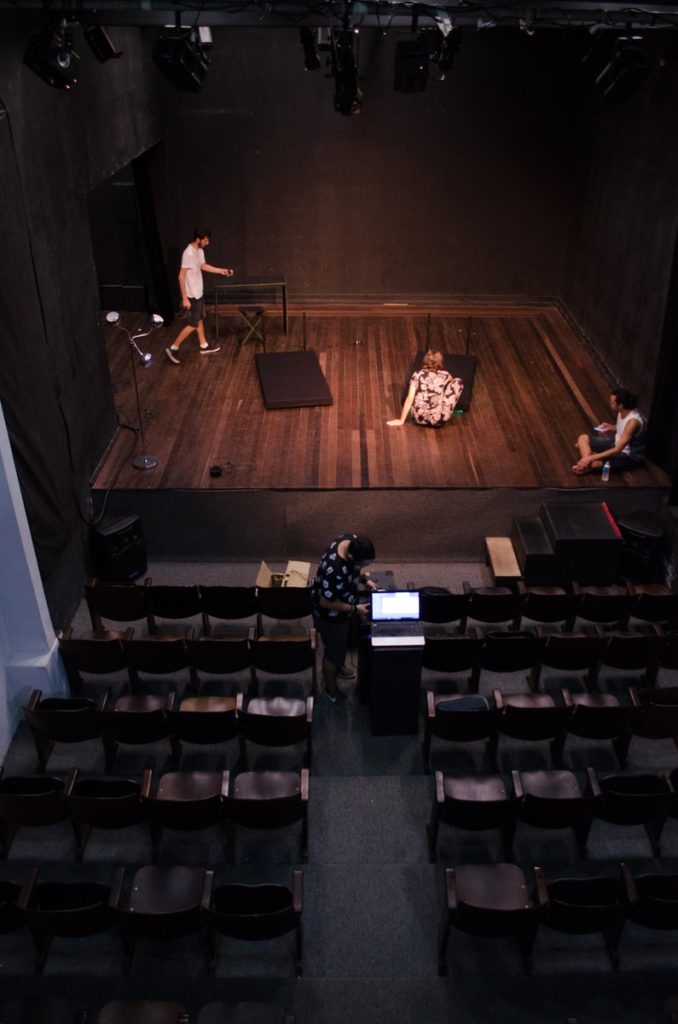
New or Existing work – that is the question
As a producer one of the most important questions to answer is ‘ do you choose ready-baked or homemade?’
For a self-producing artist, deciding whether to produce an existing work or create your own is a complicated one.
If you create everything from scratch, you’ll have a lot of work in front of you and yet, many emerging creatives choose this route, mostly because it costs them less money.
Any time you use a work or even source material created by someone you’ll have to deal with intellectual property. The only way to avoid this is to find a work in the public domain.
Masterworks come in both flavours so it is worth looking into each approach in more detail. This article is an overview which aims to arm you with more information to help you make the best decision.

Using an existing work
Creating new work isn’t for everyone. It adds to the time required before you perform. The development phase adds complexity to the process or you may simply not want to create something.
The good news is that for many forms, there are libraries filled with pieces to consider.

Why choose an existing piece?
The decision to work with an existing theatrical work can offer a new producer a lot of advantages.
Choosing an existing piece allows you to start with a tested and crafted work. Unless you stage the premiere, it will have been on stage and had artists and critical input. More often than not it will outstrip a company’s first devised work in quality. If you choose the right work you can even access genuine masterpieces.
An existing piece may already have a profile of its own. It may come with a ready-made audience, which makes it easier to promote. If it’s been produced before, you have a prototype to study and learn from.
Existing works also simplify the production process. It removes the development time which you’d have to facilitate to create a new show. This reduces the lead time to performing and associated salaries. Working with a known script also makes planning technical and design elements easier.
In one of the more complex theatrical forms, like opera, an existing piece may be more practical. The time to create these types of work is significant. Assembling the required skills to stage the production is already costly without adding a creation.
The challenges
Most existing works need you to apply for performance rights. This means you have to satisfy a creator or agent that your production is in their best interest.
Andrew Lloyd Webber might not see any personal advantage in allowing you to perform Jesus Christ Superstar in the local pub.
Securing the work you wish to perform can be difficult and costly. It also adds another gatekeeper to the process in the form of the licensing agent.

These agents are often large organisations working for many creators. They do have large libraries to choose from. An agent is usually very keen to make sure the work is performed, so they get paid. Older or less well-known shows are available.
This route can be complicated in some forms. There are few, if any, licencing organisations for dance. This means you’ll have to search out the rights holder.
If you want to licence a ballet by George Balanchine, you need to contact the trust that administers his work. Martha Graham’s works are licenced by the Martha Graham Dance Company.
All of the biggest challenges in using an existing work lie in performance rights. Cost, permission and access to what you want. The application process for these rights is another article in itself.

Creating New Work
For many new producers and emerging artists, all roads lead to creating new work.
The main appeal often lies in the financial accessibility of the process. It can also satisfy an artist’s desire to express themselves and tell their stories.
Yet, despite the advantages, it is also a road filled with challenges.
Why new work?
In the twenty years, I’ve been working in theatre, I’ve watched more and more people choose the creation route. The reasons range from social and cultural to practicality.
In the performing arts, creating new work can be a practical choice. The performing arts face huge competition from digital media, streaming and gaming.
This growing pressure on the finances of the sector can mean major, funded companies pass over anything experimental, untested or uncommercial. In turn, this lack of innovation stunts growth. Artistic exploration is hamstrung by the balance sheet and large organisations can no longer employ standing companies.
The resulting decline in opportunity for emerging artists has been tough. The young actor no longer joins a company to play small roles. Drama school can offer them a leg-up, but where do they go to gain valuable experience?
The same applies to contemporary dance, opera and most performing arts disciplines.
Creating new work and producing it yourself is now one of the best directions until you prove your chops. And as securing performance rights for successful works can be costly. Making your own show becomes a practical choice.
If the story is yours, it costs you nothing beyond the hard work you expend to make a good show. And telling a story your way can lead to a profound sense of satisfaction.
Best of all, you don’t need anyone’s permission to get started, just the ability and a drive to create good work!
Don’t half-arse it
Taking control of what you create and stage requires you to commit and be rigorous. You can’t expect to succeed with a half-arse show about nothing. If your audience looks at your work and sees the cracks, you will fail. Always use your full arse.
You also need to find support early. I know I said you don’t need anyone’s permission, but for new work to succeed, you sure as hell need people to get on board your train. At first, that’s co-creators and funders. Then it’s your audience.
You need to create something you can sell. I’m not telling you to create commercial work, but it has to have an audience. If no one sees it, then what’s the point?
If you want to make something avant-garde, try scaling down. Smaller productions need smaller audiences and can take more risks.

The process of creating new work is an article (or ten) all by itself. Here we are taking an overview. No matter what method you choose, never settle for less than your best.
Ways to create new work
There are many approaches to developing new work. Yet, they all fall on a continuum. At one end, we have authored work. On the other is devised work.
Any approach you choose will fall somewhere on this continuum.
Common elements
Both approaches to generating work have common elements. They are more alike than they are different.
Both begin by generating raw materials. A playwright develops their first draft by choosing not to judge what they write. Devising starts with improvising within loose frameworks, avoiding any plan. In both cases, the idea is to generate raw, instinctive material which you can refine later.
That refining process for the playwright is editing. They will alternate between writing and editing until they reach their final draft.
Devising work may be refined by the group observing and offering feedback to the actors on the floor. The aim here is to separate the generation from the editing.
Ideally, both approaches deliver a polished, considered script that can be rehearsed and performed.

Authored work
I use the term authored work to refer to the traditional approach. A playwright, choreographer, or composer creates a work alone. They give it to the cast in a nearly finished form.
The single author sits at one extreme. Move along, and you’ll find composer/lyricist teams and writing collectives. Any group that works together to create and develop the work away from the rehearsal floor.
This is the traditional picture that people associate with the “theatre”.
Devised work
Devised work describes a process where people collaborate in making the final piece. This collaboration takes place in the rehearsal room, and ideas are tried on the floor.
At the extreme, all group members are equal and make artistic decisions democratically. Nearer the middle, the process might allow leaders to curate the offers from the floor.
The differentiation is how many people have a say in artistic decisions. The more people involved, the more ideas available. But, you’ll need more structure to manage the process. This is why devised theatre tends to test drive offers on the floor.
The devising approach has many established methods. If you want to learn about the more useful processes, I recommend the ‘The Frantic Assembly Book of Devising Theatre’ as a good place to start.

Devising vs Rehearsing
A key consideration for a producer when working on creating new work, especially when it is devised is the differentiation between devising and rehearsing.
Devising (and creation) by its very nature relies on regular improvement and constant small (or even large) changes to the script.
Rehearsal relies on repeating the same thing until it becomes unconscious. This allows the performer to be “in the moment” during the performance.
While the processes cross over, the regular change and fluctuation of devising can make it hard for a performer to access their best performance. That means that when devising work, you’ll most likely be able to skip past the discovery part of rehearsals. But, you’ll still need to allocate time for polish.
I’ve seen many companies continue with devising until the final dress rehearsal. This affects the performances. The lack of time polishing can leave the production feeling unfinished.
Set aside time for the creative process and extra time for rehearsal. Finalise and lock your script well before opening. If you feel more work is needed once your show has opened, leave it for the next production.
Outside perspectives
When you’re creating, it is easy to find yourself so close to the material that you lose any sense of objectivity.
Maybe you are so close you can’t see that your choreographic language is inconsistent. Or the big aria is in the wrong place for the flow of the piece. You may have left out critical information without realising it. You think it’s there because your mind stored away information from an earlier draft.
To help you see things the way your audience will, it is valuable to seek an outside perspective. It can help you tease out the strengths and weaknesses of your work.
If you can afford it, I recommend paying a professional. You could seek out a script consultant, dramaturg or creative peer to give you feedback. Specialists in these areas have significant experience in identifying issues. The cost may be less than expected. It can also increase the likelihood of securing funding support.
If you do not have the money to pay a professional, and sadly most of us don’t, there are other options.
No matter the type of creative process, there will be a product to share. Try presenting it to a group of your peers, then discussing it afterwards. This can help you identify what works and doesn’t.
If you are expending the time and energy it takes to create a show, you should do everything you can to make it successful. Whatever you do, choose people you respect but who won’t sugarcoat it. Nice isn’t helpful. Honest and constructive is.
A public or invited presentation
Another option is to present a stripped-down version of the work to a selected audience. This is best done with a nearly complete product before beginning rehearsal.
Make it a small, invited audience. Try and mix up the people you ask so that you aren’t just presenting to artists. But don’t make it open or sell tickets as you risk cannibalising your future audience.
It helps to have honest, constructive people in the audience. But, what you are looking for here is the group’s unconscious reaction to the work. The way the audience reacts tells you a lot about the effectiveness of the work.
This is also an excellent time to invite mentors or respected peers for feedback too.

Summary
Whichever route you choose there are things a producer has to consider. In most cases it can be summarised in the old adage …‘ good quality, fast or cheap – pick two!”
We should all be aiming for good quality so we only have two to choose from. Creating a new work relies on having the time and using an existing work requires you to spend money. That’s either budget or schedule.
The only thing to say is that if you have no experience in making new work, you may not achieve the same quality you desire. Existing work with a good track record leans on the experience of the creator.
I’m a big fan of new work creation, just don’t automatically assume that means devising. There are many writers, choreographers, composers and other creators out there ready to collaborate!
For more visit our roadmap articles.